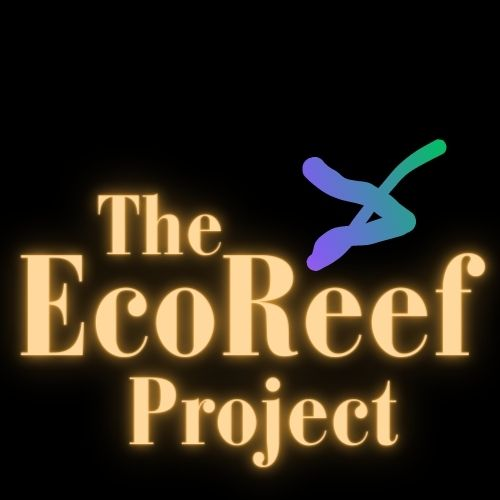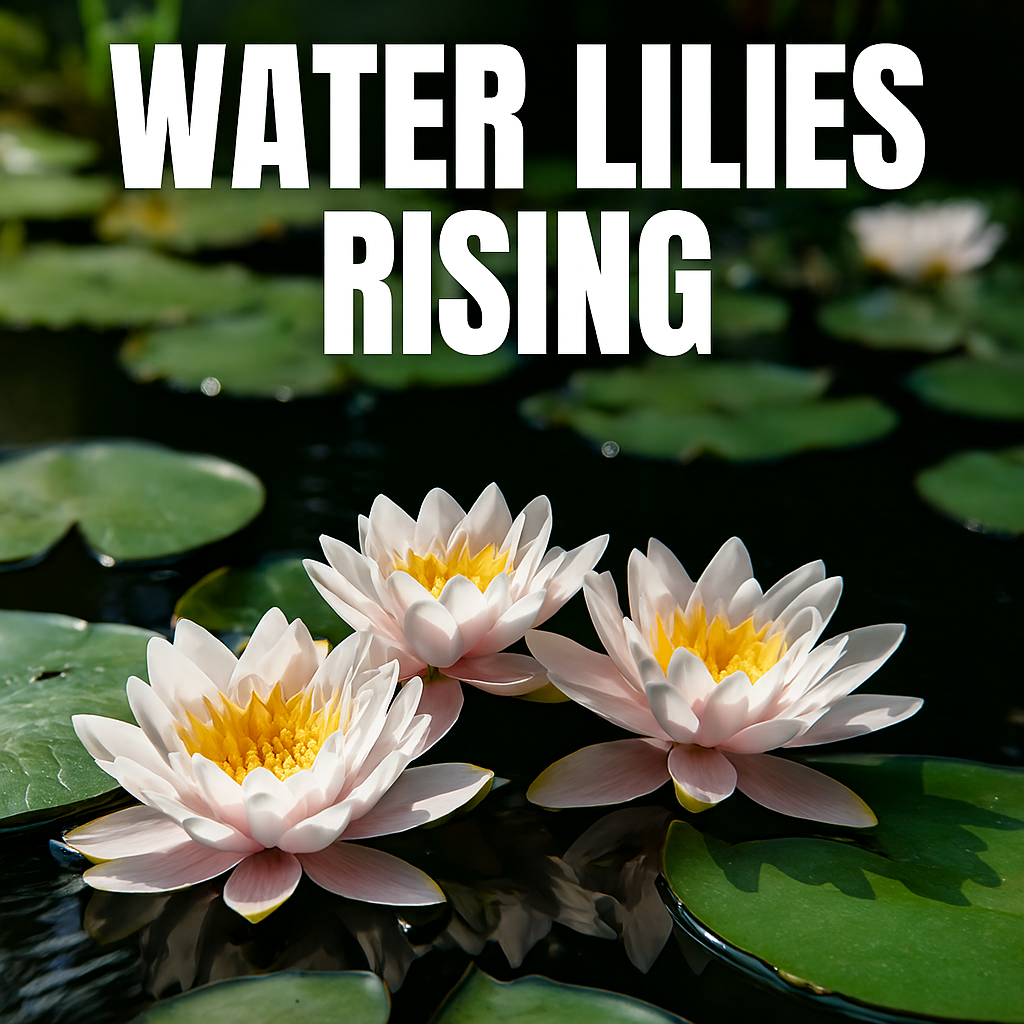Fish Breeding Aquarium With EcoReefs
Introduction To Ecological Aquarium Design
Establishing a fish breeding aquarium that supports ecological integrity and regenerative aquatic behavior requires more than ornamental intent—it demands a biologically responsive framework. EcoReefs offer a modular solution that transforms recycled waste into functional underwater architecture. These structures replicate the complexity of natural reef systems, providing refuge, anchorage, and breeding zones for aquatic life. Their layered composition—twisted branches, mineral-rich stones, and heat-molded plastic—creates a dynamic interface between artificial design and organic evolution. Unlike static decor, EcoReefs adapt to water flow, plant colonization, and fish behavior over time. They serve as both symbolic and structural anchors, reinforcing the principles of circular design and habitat restoration. This guide outlines the construction, placement, and ecological impact of EcoReefs within domestic aquariums. Each module explores a distinct dimension of their functionality, from material sourcing to behavioral outcomes. Whether implemented in small tanks or scaled systems, EcoReefs redefine the role of aquarium architecture. They invite aquarists to become stewards of aquatic regeneration, not just caretakers of ornamental life. The process begins with intentional design and culminates in a living, evolving ecosystem. By integrating EcoReefs, aquarists contribute to biodiversity, reduce waste, and foster sustainable breeding environments.
EcoReefs As Functional And Symbolic Infrastructure
Organic Complexity And Recycled Geometry
EcoReefs or eco reefs are engineered to serve as biologically active infrastructure within controlled aquatic environments. Their design integrates aged twigs, rough stones, and repurposed plastic bottles to form a lattice of refuge and anchorage. Twigs provide horizontal complexity, simulating root tangles that fish use for nesting and shelter. Stones contribute vertical weight and surface area for microbial colonization and algae growth. The plastic casing, once a pollutant, becomes a hardened shell that resists degradation and anchors the organic elements. This tri-material fusion creates a habitat that is both stable and porous, allowing water to circulate while offering protection. Unlike ceramic inserts or artificial caves, EcoReefs evolve over time, absorbing biofilm and supporting plant colonization. Their modularity allows for change expansion, contraction, and ecology reconfiguration based on tank dynamics. Each unit becomes a microcosm of ecological intent—a place where breeding, feeding, and shelter converge. The symbolic transformation of waste into refuge reinforces the principles of regenerative design. EcoReefs are not static—they are responsive, adaptive, and biologically expressive. Their presence alters fish behavior, reduces stress, and enhances reproductive success. They also serve as visual anchors, adding depth and texture to the aquarium landscape. The following table outlines the core components and their ecological functions:
| Component | Functional Role | Ecological Impact |
|---|---|---|
| Twisted Branches | Shelter and nesting zones | Mimic natural root systems |
| Rough Stones | Weight and algae substrate | Support microbial biodiversity |
| Plastic Bottles | Structural casing | Transform waste into habitat |
Sourcing Materials With Ecological Intent
Waste Recovery And Organic Selection
Constructing EcoReefs begins with deliberate material sourcing aligned with ecological principles. Plastic bottles should be recovered from domestic waste streams, not purchased, to reinforce the ethos of reuse. Twigs must be aged and naturally twisted, ideally collected from native tree species to avoid tannin release. Stones should be rough, porous, and mineral-rich, offering surface area for algae and microbial growth. Sisal rope, a biodegradable fiber, can be used for tethering and modular linking. Each material must be selected not only for its physical properties but for its ecological compatibility. Avoid synthetic adhesives, treated wood, or polished stones, as these may disrupt water chemistry or inhibit biological colonization. The goal is to create a structure that integrates seamlessly into the aquatic environment, supporting both plant and animal life. Material selection is not merely technical—it is symbolic, reflecting a commitment to ecological restoration. By transforming waste into habitat, aquarists participate in a broader narrative of environmental stewardship. The following table provides a sourcing guide for EcoReef components:
| Material Type | Source Recommendation | Ecological Consideration |
|---|---|---|
| Plastic Bottles | Domestic recycling streams | Non-toxic when heat-treated |
| Twisted Branches | Fallen native tree limbs | Avoid fresh wood with tannins |
| Rough Stones | Riverbeds or garden supply | Prefer porous, mineral-rich types |
| Sisal Rope | Natural fiber suppliers | Biodegradable and durable |
Configuring EcoReefs For Spatial Efficiency
Layout Strategy And Behavioral Optimization
Once materials are sourced and the eco reefs or EcoReef is assembled, the placement of EcoReefs within the aquarium becomes critical yet practical to the ecological success. Strategic positioning influences fish movement, territorial boundaries, and breeding behavior. Units should be spaced to allow unobstructed swimming paths while offering secluded zones for nesting. Corners and substrate edges are ideal for anchoring, as they mimic natural hideouts and reduce stress-induced aggression. Avoid clustering all units in one area, which can lead to overcrowding and disrupt water flow. Instead, distribute EcoReefs in a staggered pattern that encourages exploration and habitat diversity. Consider the tank’s filtration system—placing units near outlets can enhance oxygenation and promote microbial growth. Lighting also plays a role; shaded zones support plant colonization, while illuminated areas attract algae and grazing species. Each EcoReef should be treated as a modular node within a larger ecological network. Their arrangement must reflect both aesthetic balance and biological function. Repositioning may be necessary over time as fish populations grow and plants expand. The goal is to create a dynamic, responsive layout that evolves with the ecosystem. This approach transforms the aquarium from a static display into a living, adaptive habitat.
| Placement Zone | Ecological Function | Behavioral Outcome |
|---|---|---|
| Tank Corners | Shelter and territorial refuge | Reduced aggression |
| Substrate Edges | Plant anchoring and nesting | Enhanced breeding behavior |
| Near Filtration | Oxygenation and biofilm growth | Increased microbial diversity |
| Shaded Areas | Algae and plant colonization | Natural grazing and shelter |
Encouraging Plant Growth Through EcoReef Anchoring
Botanical Integration And Habitat Stability
EcoReefs serve as ideal anchors for aquatic plants, reinforcing the structural and ecological integrity of the aquarium. Their porous surfaces and organic textures provide footholds for root systems and biofilm development. Twigs and stones offer crevices where seeds and spores can settle, while the plastic casing resists displacement and supports vertical growth. Select plant species that thrive in low to moderate light and tolerate variable water conditions. Examples include Java fern, Anubias, and moss varieties, which attach easily to rough surfaces and require minimal substrate. Avoid invasive or fast-growing species that may overwhelm the tank’s balance. Planting should be done gradually, allowing each EcoReef to host a unique botanical profile. This diversity enhances visual depth and supports niche habitats for different fish species. Over time, plants will colonize the structure, creating shaded zones and oxygen-rich microenvironments. Regular pruning and monitoring are essential to prevent overgrowth and maintain water clarity. The integration of plants transforms EcoReefs from inert structures into living, breathing components of the ecosystem. Their dual role as shelter and botanical anchor reinforces the principles of regenerative design.
| Plant Type | Attachment Method | Ecological Benefit |
|---|---|---|
| Java Fern | Tie to twigs or stones | Oxygenation and shelter |
| Anubias | Root into crevices | Low-light tolerance |
| Moss Varieties | Spread across surfaces | Microhabitat formation |

Supporting Fish Breeding Behavior With EcoReef Design
Reproductive Zones And Stress Reduction
EcoReefs are particularly effective in promoting fish breeding due to their structural complexity and protective features. The maze-like arrangement of twigs and stones creates secluded zones where fish can lay eggs and guard their offspring. These areas reduce exposure to predators and minimize stress, which is critical for successful reproduction. Species such as cichlids, tetras, and gouramis benefit from defined territories and nesting sites. The presence of plants further enhances breeding conditions by providing cover and oxygenation. EcoReefs also influence mating rituals, encouraging courtship displays and territorial defense. Their modular nature allows aquarists to tailor the environment to specific species, adjusting size, shape, and placement as needed. Monitoring is essential during breeding periods to ensure that dominant fish do not monopolize resources or harass others. EcoReefs can be expanded or reconfigured to accommodate growing populations and shifting dynamics. Their role in breeding extends beyond shelter—they create behavioral cues and environmental triggers that support reproductive cycles. This makes them indispensable in any aquarium designed for sustainable fish propagation.
| Fish Species | Breeding Preference | EcoReef Benefit |
|---|---|---|
| Cichlids | Territorial nesting zones | Defined boundaries and shelter |
| Tetras | Dense plant cover | Egg protection and oxygenation |
| Gouramis | Surface and mid-level zones | Modular placement flexibility |
Enhancing Biodiversity Through EcoReef Modularity
Microhabitats And Species Interplay
EcoReefs contribute to biodiversity by creating layered microhabitats within the aquarium. Each unit supports a unique combination of plant life, microbial colonies, and fish behavior. This diversity reduces competition and fosters ecological resilience. Modular design allows aquarists to introduce new units gradually, expanding the habitat without disrupting existing dynamics. Different zones can be tailored to specific species, promoting coexistence and reducing territorial conflict. The presence of varied textures and surfaces encourages colonization by beneficial bacteria, which aid in nutrient cycling and water purification. Algae growth on stones provides food for grazing species, while shaded crevices offer refuge for nocturnal or shy fish. Over time, the aquarium evolves into a mosaic of interconnected ecosystems, each contributing to the overall health and stability of the tank. This approach mirrors natural reef systems, where diversity is both a product and a driver of ecological success. EcoReefs thus serve as catalysts for biodiversity, transforming the aquarium into a living laboratory of aquatic interaction.
| EcoReef Zone | Supported Species | Ecological Role |
|---|---|---|
| Algae-Rich Areas | Grazers and scavengers | Nutrient cycling and feeding |
| Shaded Crevices | Nocturnal and shy fish | Refuge and stress reduction |
| Plant-Dense Zones | Breeders and juveniles | Shelter and oxygenation |
Maintaining EcoReefs For Long-Term Viability
Cleaning Protocols And Structural Integrity
EcoReefs require regular maintenance to preserve their ecological function and aesthetic appeal. Cleaning should be done gently to avoid disrupting microbial colonies and plant roots. Use soft brushes or siphons to remove debris without dislodging anchored components. Avoid chemical cleaners, which may harm fish or degrade the plastic casing. Periodic inspection is necessary to identify wear, algae overgrowth, or structural instability. Twigs may soften over time and should be replaced if they lose rigidity. Stones can be repositioned to maintain balance and prevent tipping. The plastic shell, once hardened, remains durable but may require surface cleaning to remove biofilm buildup. Maintenance routines should align with the aquarium’s overall care schedule, integrating water changes, filter checks, and plant pruning. EcoReefs are designed to evolve, not remain static—adjustments are part of their lifecycle. Documenting changes and observing fish behavior can guide future modifications. This proactive approach ensures that EcoReefs continue to support biodiversity, breeding, and aesthetic harmony over time.
| Maintenance Task | Frequency Recommendation | Purpose |
|---|---|---|
| Debris Removal | Weekly | Prevent clogging and decay |
| Structural Check | Monthly | Ensure stability and safety |
| Biofilm Cleaning | Bi-weekly | Maintain water clarity |
| Twig Replacement | As needed | Preserve shelter integrity |
Mapping Behavioral Patterns Around EcoReefs
Territorial Dynamics And Social Structuring
EcoReefs influence fish behavior by introducing spatial boundaries and refuge zones that mimic natural ecosystems. Territorial species often establish dominance around specific units, using them as breeding grounds and defensive perimeters. Passive species benefit from the layered shelter, avoiding conflict and stress. The modular design allows aquarists to observe and adjust social dynamics without dismantling the entire setup. Behavioral mapping becomes a tool for ecological calibration, guiding placement and expansion. Over time, fish develop predictable patterns—some gravitate toward shaded crevices, others patrol open corridors. These patterns inform future design decisions, reinforcing the aquarium’s adaptive nature. EcoReefs thus serve as behavioral anchors, shaping movement, interaction, and reproduction. Their presence transforms the tank into a responsive long term changing environment, not just a decorative container. This behavioral interplay is essential for long-term ecological stability.
| Behavior Type | EcoReef Influence | Observational Insight |
|---|---|---|
| Territorial Nesting | Defined zones and boundaries | Breeding and defense patterns |
| Passive Shelter | Layered refuge and cover | Stress reduction and coexistence |
| Patrol Movement | Open corridors and spacing | Social hierarchy and interaction |

Expanding EcoReefs With Symbolic Modularity
Growth Strategy And Ecological Scaling
EcoReefs are designed for expansion, allowing aquarists to scale their ecosystem without disrupting its balance. New units can be introduced gradually, each tailored to specific ecological or aesthetic goals. Expansion may follow behavioral shifts, plant growth, or population increases. Modular linking with sisal rope enables flexible configurations—linear chains, radial clusters, or staggered grids. Each addition reinforces the symbolic narrative of regeneration, turning waste into habitat. Scaling should be intentional, guided by observation and ecological need. Overbuilding can lead to stagnation, while strategic placement enhances biodiversity. The aquarium becomes a living archive of ecological decisions, each unit a chapter in its evolution. EcoReefs thus support both physical growth and symbolic storytelling. Their modularity reflects the dynamic nature of aquatic ecosystems.
| Expansion Method | Ecological Benefit | Symbolic Interpretation |
|---|---|---|
| Linear Chains | Flow optimization | Continuity and migration |
| Radial Clusters | Shelter density | Community and nesting |
| Staggered Grids | Behavioral diversity | Complexity and adaptation |
Integrating EcoReefs Into Educational Frameworks
Learning Environments And Ecological Literacy
EcoReefs offer a compelling platform for ecological education, bridging theory and practice in aquatic design. Their construction teaches principles of reuse, habitat restoration, and biodiversity. In classroom or workshop settings, students can build and observe EcoReefs, gaining hands-on experience with ecological systems. The visual and behavioral feedback from fish and plants reinforces learning outcomes. EcoReefs become living models of sustainability, ideal for STEM curricula and environmental outreach. Their modularity allows for comparative studies—different materials, placements, or species interactions. Educators can document changes, encouraging inquiry and experimentation. This transforms aquariums into pedagogical tools, not just ornamental displays. EcoReefs thus contribute to ecological literacy and symbolic understanding. They embody the intersection of design, biology, and environmental ethics.
| Educational Use | Learning Outcome | Pedagogical Value |
|---|---|---|
| Classroom Projects | Habitat construction | Hands-on ecological design |
| STEM Integration | Biodiversity observation | Scientific inquiry and analysis |
| Outreach Programs | Sustainability awareness | Community engagement |
Designing EcoReefs For Visual Resonance
Aesthetic Depth And Symbolic Texture
Beyond ecological function, EcoReefs contribute to the visual identity of the aquarium. Their layered textures—twigs, stones, and molded plastic—create depth and contrast against the water’s clarity. Plant growth adds organic movement and strong ecology stabilization, while fish behavior animates the natural structure. Strategic lighting enhances these effects, casting shadows and highlighting contours. The result is a dynamic visual landscape that evolves over time. Aquarists can curate this aesthetic by selecting materials with varied colors and shapes. Twigs with natural curvature, stones with mineral flecks, and translucent plastic shells all contribute to symbolic richness. The aquarium becomes a canvas of ecological storytelling, where each EcoReef is a visual metaphor. This approach elevates aquarium design from decoration to narrative architecture. EcoReefs thus serve both ecological and artistic purposes.
| Visual Element | Design Strategy | Symbolic Impact |
|---|---|---|
| Twigs | Curvature and layering | Natural complexity |
| Stones | Color and texture variation | Geological depth |
| Plastic Shells | Transparency and form | Transformation and resilience |










Leave a Reply